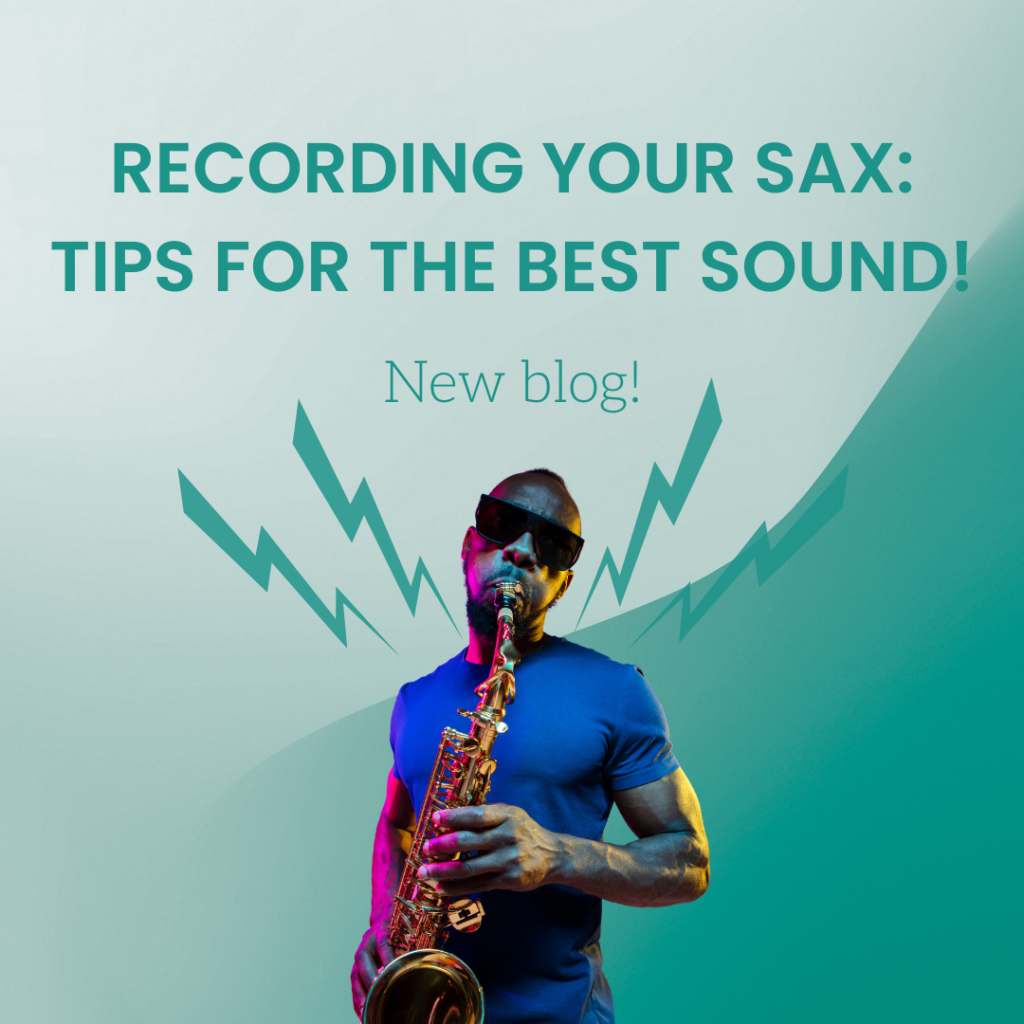Perfecting saxophone recording
Recording your saxophone can be a thrilling yet challenging task. No matter if you’re laying down tracks for a professional studio album or creating demos in your home studio, capturing the true essence and richness of your saxophone is crucial. Here are some essential tips to ensure you get the best sound in your recordings.
- Choose the right microphone
The microphone is the most critical component in capturing your saxophone™s sound. Here are some options and tips:
- Dynamic Microphones: These are robust and can handle high sound pressure levels. The Shure SM57 is a popular choice for its durability and quality.
- Condenser Microphones: Known for their sensitivity and wide frequency response, they capture the nuances of your playing. The Neumann U87 , Neumann MCM 114
or the AKG C414 are excellent choices. - Ribbon Microphones: These offer a warm and natural sound. The Royer R-121 is a renowned ribbon mic that works beautifully with saxophones.
- Mic placement
Mic placement significantly influences the sound quality. Here are some guidelines:
- Distance: Start with the mic about 6-12 inches away from the bell of the saxophone. Too close, and you might get a boomy sound; too far, and you might lose clarity.
- Angle: Angle the mic slightly off-axis to avoid capturing too much air noise from the bell.
- Experiment: Every saxophone and player is unique. Move the mic around to find the sweet spot that captures the best balance of body and brightness.
- Room acoustics
The room you record in can add character to your sound. Here are some tips for optimizing your recording space:
- Avoid Reflective Surfaces: Too many hard surfaces can cause unwanted reflections. Use carpets, curtains, and acoustic panels to absorb some of the excess sound.
- Room Size: Larger rooms with high ceilings tend to sound better than small, cramped spaces.
- Isolation: Minimize external noise and sound leakage. This can be achieved by using heavy drapes, closed doors, and even DIY solutions like mattresses or bookshelves filled with books.
- Preamp and interface
A good preamp and audio interface can make a significant difference in your recording quality:
- Preamps: A quality preamp can add warmth and depth to your sound. The Universal Audio 610 and the Avalon VT-737sp are popular choices.
- Audio Interfaces: Ensure your interface has high-quality preamps and converters. Focusrite Scarlett and Universal Audio Apollo are highly regarded.
- Recording levels
Proper gain staging is crucial:
- Avoid Clipping: Ensure your input levels are set correctly to avoid digital distortion. Aim for peaks around -6dB to -3dB.
- Dynamic Range: Capture the full dynamic range of your playing by setting levels that can handle both the softest and loudest passages without clipping.
- EQ and compression
Post-processing can polish your sound:
- EQ: Subtract frequencies that muddy your mix (typically around 200-400 Hz) and add some brightness (around 5-7 kHz) if needed. Avoid excessive boosting.
- Compression: Use compression to even out the dynamics. A gentle ratio (2:1 or 3:1) with a slow attack and release can add punch without losing the natural dynamics of your playing.
- Practice and performance
Finally, the best equipment and settings can’t compensate for poor performance:
- Rehearse: Be well-prepared before hitting the record button. Know your parts inside and out.
- Emotion and Expression: Conveying emotion and expression in your playing will translate into a more compelling recording.
Recording in a bedroom (For beginners)
If you’re a beginner recording in a bedroom, you might face some additional challenges. Here are some practical tips to help you get started:
Room Preparation
- Soundproofing: Use blankets, rugs, and pillows to reduce echo and outside noise. Hang thick blankets on the walls and place pillows in the corners to absorb sound.
- Furniture: Use bookshelves, couches, and other furniture to break up sound reflections. The irregular surfaces can help diffuse sound waves.
Mic Selection and Placement
- Affordable Microphones: You don’t need to break the bank. A Shure SM57 or Audio-Technica AT2020 can provide good quality recordings without costing too much.
- Positioning: In a smaller room, start with the mic about 6-8 inches from the saxophone bell, angled slightly to avoid capturing too much air noise. Experiment with the distance to find the sweet spot.
Dealing with Noise
- Quiet Times: Record during quieter parts of the day to minimize background noise. Late nights or early mornings can be ideal.
- Noise Reduction: If you can’t eliminate all noise, use noise reduction software in your DAW (Digital Audio Workstation) to clean up the recording.
DAW and Interface
- Beginner-Friendly DAWs: Software like GarageBand (Mac) or Audacity (PC/Mac) are user-friendly and free or inexpensive.
- Affordable Interfaces: Focusrite Scarlett 2i2 or PreSonus AudioBox are excellent beginner interfaces that provide good quality without a high price tag.
Frequently made mistakes and solutions
Here are some common pitfalls and tips to avoid them:
Mistake |
Problem |
Solution |
Mic too close to the bell |
It creates a boomy, overly aggressive sound |
Move the mic back to about 6-12 inches from the bell and angle it slightly off-axis. |
Ignoring room acoustics |
Causes unwanted reflections and a muddy sound |
Use soft furnishings, acoustic panels, and other absorptive materials to treat your room. |
Recording at too high gain levels |
Results in clipping and distortion |
Set your input levels so that peaks are around -6dB to -3dB. This ensures you capture the full dynamic range without distortion. |
Overuse of EQ and compression |
Can make your recording sound unnatural |
Use EQ and compression sparingly. Focus on subtractive EQ to remove unwanted frequencies and use gentle compression to maintain natural dynamics. |
Inconsistent playing dynamics |
Leads to uneven volume and tone. |
Practice consistent playing dynamics and consider using light compression to even out the volume without losing expression. |
Not monitoring with headphones |
You might not catch noise or balance issues |
Always monitor your recording with high-quality headphones to catch and correct issues in real time. |

Explore more content!
- Top 5 gadgets for Sax Players
- Electronic VS Classic Saxophone
- Top 5 Easy Alto Saxophone Songs for Beginners!
- Electronic Saxophones, the ultimate guide!
- Top 5 Youtube channels for Saxophonists!
- How to play the saxophone without disturbing your neighbors?
- Travel Instruments, every musician must know
Happy reading! 📚🎵
Odisei Music Team 🎷
